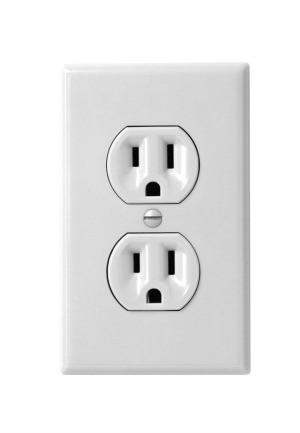 I have an older home with a fuse box and I need to add outlets in the basement. I also need to up the fuses to at least 20 from 15 so I can run my saw. How do I do this?
I have an older home with a fuse box and I need to add outlets in the basement. I also need to up the fuses to at least 20 from 15 so I can run my saw. How do I do this?
Sent by email...
Dear Doyle,
Make sure your fire insurance is paid up and your electrical inspector is paid off, before you even think of doing that!
Those fuses are rated to protect the 15 amp wiring and to prevent you from burning your house down. What is the point in having a fuse that doesn't get warm until the wires have set the wall on fire? Upping the fuses is arson.
Yeah, I know I am a big meanie, but I am glad that, when I was a young electrician, my electrical inspector was the meanest bastid in the North. Thanks to his incessant ranting and brainwashing about that sort of stuff, none of my clients ever had an electrical fire.
OK, I'll get off my soap box now. What you need to do is add a sub-panel with additional fuses or breakers, and from there run a 20 amp line to your saw, and 15 amp lines to your new outlets, or replace the old fuse box with a modern breaker panel.
You might also want to consider pinning the saw motor to 220 Volt. The diagram for doing that is under the cover of the motor connection box. Then you can use cheap 15 Amp wire for the saw. At 220 Volt it draws only half as many Amps as at 110 Volt.
With a breaker panel that is easy. Then you can use a double breaker and connect the red and the black wire of one 3-wire cable to the basement to it.
However, since you might add a dust collector and a little air compressor by next Christmas, it would be a good idea to run two of those 3-wire cables to the basement. Use the old wiring just for lights and small power tools.
By the way 3-wire cable has a red, a black, a white wire, plus a bare (or yellow/green) wire. The bare or yellow/green wire is not counted.
Have FUN!
DearWebby
webby.com/
Hire an elecrtrician we had fuse box and kept having power surges thought it was just the fuses so we kept replacing them finally called out an electrician, he found wires that were broken and electricity was jumping from one wire to another we never smelled anything. The panel box on the house when he removed it you could see the damage from the sparks. He told us we were lucky to be alive
So please if your not experienced hire a pro
Here are the questions asked by community members. Read on to see the answers provided by the ThriftyFun community.
I am installing a new electric hot water heater in an old wood frame house that was built in 1936. It has a conventional fuse box, not a circuit breaker panel. I ran a 10 gauge 3 wire from the water heater to a new 220V receptacle where it plugs into the connecting wire, then to the fuse box and connected it exactly as the 220V stove is connected.
The shielded black and white wires connecting to the separate positive posts and the bare copper wire to the ground bar. Please advise me as to whether or not this appears to be correct. Thank you.Technically I don't think anyone here can answer this question because we don't know the electrical code requirements for your area. So while it could be correct in that it all works, if it does not meet the code for your area, it is not correct.
Can you get your area's code person to give you the specs and confirm your process?
Post back what you learn! Blessings!
You are asking a question that most members of ThriftyFun will have no true knowledge and should not try to answer.
There could possibly be a certified electrician member that may be able to help but they may not wish to advise on something like this.
I'm not sure if you need a permit for this type of electrical work but most cities/counties do require a permit for any type of electrical work.
You might try asking your question on a forum that has qualified members who may be able to help you.
You will usually have to register to ask questions.
www.electriciansforums.net/
You don't want to start a house fire if it is not correct. I would call in an electrician to check your work if I were you.
I have wired many offices and homes. I have been doing this for years. I would like to see some photos of what you are explaining to make sure you are using the right gauge of wire. When wiring to a 220V circuit now the wire is very thick and it is insulated. I know because I just changed out all the wiring in our home a few years back to bring it up to code. We had older wiring in our home and needed to upgrade to the new standards here.